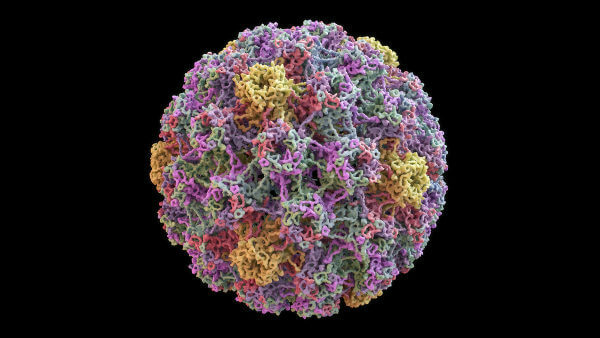The penis is an organ of male reproductive system that has function essential in human reproduction. In addition, inside the penis, the passage of the urethra is observed, which also serves as a way for the elimination of urine. Next, we will talk more about this important organ present in men's bodies.
→ Penis Anatomy
The penis is an organ that is part of the male genital system and is related to reproduction and also with the elimination of urine, since the urethra passes through the interior of the organ. he has tthree columns of an erectile tissue and an urethra. Around the columns, we found non-adipose subcutaneous tissue, and, covering the organ, we found skin.
The skin that lines the penis is characterized by being thinner and also darker than that present on the rest of the man's body. Hairs are not seen along the penis, they are only present in the base region. The skin in the terminal region folds and protrudes over the so-called glans, forming the so-called foreskin.
The erectile tissue present in the penis receives this name due to its ability to fill with blood and make the structure more rigid at the time of erection. Two of these three columns are located dorsally and form the so-called
corpora cavernosa of the penis. These corpora cavernosa are divided by bundles, which form the so-called cavernous spaces.
The other remaining column, called spongy body or corpus cavernosum of the urethra, it is located ventrally and is crossed by the urethra. The spongy bodies, like the corpora cavernosa, have bundles forming spaces, however, these are thinner and more elastic. The urethra, in this region, presents the so-called Littre's glands, which are characterized by the secretion of mucus. The spongy body, in its terminal potion, expands forming the glans penis.
Do not stop now... There's more after the advertising ;)
Read too: Prostate cancer
→ Erection
Erection is the process that guarantees a increased blood flow in the penis, making it rigid and erect. Erection occurs after sexual stimulation, which triggers parasympathetic stimulation, which causes the arteries that supply the penis to become dilated. With this dilation, a greater amount of blood reaches the organ, which ends up causing compression of the veins in the penis.
Thus, the blood is retained in the organ, making it erect. Shortly after ejaculation, parasympathetic stimulation subsides, and the penis returns to a flaccid state. An interesting point to highlight is that in the erectile state the penis is about 4.5 cm longer than in its flaccid state.
It is noteworthy that in some situations they can cause an erection difficulty. Among these factors we can mention the emotional factors, advanced age and alcohol and drug use.
→ Phimosis and circumcision
Phimosis is a condition in which man has a small foreskin hole, which hinders the retraction of the foreskin on the glans. This difficulty in retraction ends up making it difficult to clean the area, which can favor the emergence of infections and even penile cancer.

In circumcision, the foreskin is removed.
Phimosis is one of the conditions under which the call is recommended circumcision. This procedure consists of removal of the skin that forms the foreskin. In addition to phimosis, circumcision is recommended in case of balanoposthitis, a condition that causes inflammation of the foreskin and glans, and is also performed for cultural reasons.
→ penile cancer
Penile cancer is a rare type of cancer, mainly in developed countries. In 2015, according to data from the National Cancer Institute, this type of cancer was responsible for 402 deaths. The risk factors for the development of this problem are:
Presence of phimosis;
Sexually transmitted diseases, especially the HPV;
Bad hygiene.
The treatment of this type of cancer involves surgery, radiotherapy and chemotherapy. In advanced cases of the disease, the organ amputation. It is estimated that around 1000 amputations of the organ occur each year in Brazil.

HPV is linked to penile cancer in men and cervical cancer in women.
It is noteworthy that the disease can be forewarned with very simple measures, like hygiene of the genital region, use of condoms during sexual intercourse and performing circumcision in cases where the procedure is recommended.
Read too: How to use a male condom
→ penis enlargement
The size of the penis is often a reason for concern for men, who end up looking for procedures aimed at increasing the size of the organ. According to the Brazilian Society of Urology, most men who seek this procedure have a normal penis and present an incorrect interpretation of your organ size.
Men, when looking for penile enlargement techniques, often, they do not care about the consequences of the procedure and the effectiveness of the process.. Thus, it is common that, after undergoing the procedure, they have to deal with frustration and complications such as infections and erectile dysfunction.
Although many places claim efficiency in the procedure, performing penile enlargement on a normal penis is not a procedure that has credibility in the medical community. In an opinion on penile augmentation procedures, the Brazilian Society of Urology is emphatic when saying that: “through its Department of Sexual Medicine and Reproduction, contraindicates this practice and reinforces that there are no studies or scientific data that confirm the credibility, efficacy or safety of any size-augmentation technique peniles.”
It is noteworthy that there are surgical techniques that aim to increase the penile shaft, but these techniques do not are used for people with normal penis size and are intended to ensure a functional improvement for the patient.
These techniques, according to the Brazilian Society of Urology, are used to cases of micropenis, epispadias (urethral opening appears on the dorsal surface of the penis), some cases of hypospadias (urethral opening appears on the ventral surface of the penis), partial amputations, traumatic defects, retractions or shortening due to Peyronie's Disease and penile retractions in spinal cord injured patients, in order to allow a better placement of prostheses and urinary collectors.
By Ma. Vanessa Sardinha dos Santos

